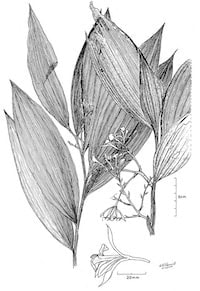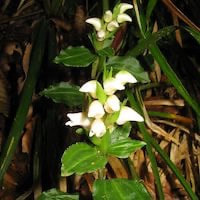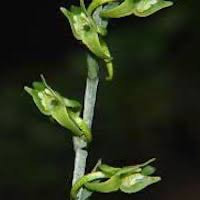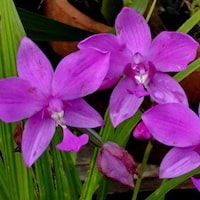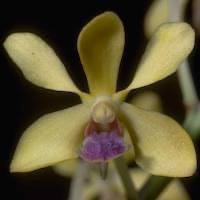MC2- Men's Citrus 2 - The Marigold standard
|
Native Singaporean Orchid notes: Thunia Marshalliana
Thunia marshalliana, known as Sun Lan (bamboo orchid) in Chinese, has various names across regions like Thailand and Nepal. It's native to India, China, and Southeast Asia, including Singapore, and was named by H.G. Reichenbach in 1852. Its large, fragrant flowers are short-lived with white floral bracts. In Chinese medicine, the whole plant is used to treat conditions like coughs, fractures, and improve blood circulation, with compounds like thunalbene and batatasin-III showing potential health benefits.
|
Therapeutic Orchid notes:
|
Corymborkis Thouars.
The genus Guanhua Lan, with its five species, is widely spread across tropical lowlands. These orchids are not widely grown because their flowers last only briefly. This makes them less common in gardens. Their short-lived blooms pose challenges for maintenance, limiting their cultivation. |
|
Goodyera henryi Rolfe
The Guangebanye Lan, also known as the Naked Bud Spotted Leaf Orchid, features a long creeping rhizome and reaches up to 10 to 15 centimeters tall. In Chinese herbal medicine, the whole plant is valued for promoting blood circulation and treating ailments like snake bites, dysentery, and lymphatic tuberculosis. It holds importance for its potential therapeutic benefits in traditional Chinese medicine. |
|
Platanthera stenoglossa Hayata
The Xiabanfendie Lan, also known as the Slim Petal Pink Butterfly Orchid, thrives in Taiwan (specifically Ilan) and the Ryukyu Islands of Japan. The entire plant of this species is valued in traditional medicine for its medicinal benefits. It is known to reduce fever, detoxify the body, and act as an expectorant to clear phlegm and ease coughs. It also enhances blood circulation and helps stop bleeding, promoting overall health and wellness. |
|
Spathoglottis plicata Blume
The Pink and Purple Spathoglottis, known as Zihuabaoshe Lan in Chinese, are plants that flower throughout the year, particularly thriving after monsoon periods or during dry seasons. Introduced to Malaysian and Singaporean gardens by Mr. Issac Henry Burkill, they commonly grow in open scrubland alongside other flora like Aurndina graminifolia and ferns. Locally, indigenous communities use the plant for medicinal purposes; in Peninsular Malaysia's Perak state, it's brewed into a decoction for treating rheumatism. Similar remedies are found in India, Bangladesh, and the Nicobar Islands, where it's used for earaches and skincare. |
|
Vanda testacea (Lindl.) Rchb.f. Syn. Vanda parviflora Lindl.
The orchid known as Malanga in Orissa and by medicinal names Rasna and Banda has a habitat spanning the Himalayan foothills, including Nepal, Bhutan, Sikkim, northern Myanmar, Thailand, and Sri Lanka. It thrives in dry forests at elevations from 800 to 2000 meters, often growing on Terminalia chebula trees. Phytochemical analysis identifies parviflorin and tessalatin, compounds beneficial in traditional medicine for treating rheumatism, wounds, and earaches. |
Other scent note
Scentopia Library Reference ingredient
Pomelo - Check details at Scentopia's scent library
Download the guided mediation that works best with this Orchid fragrance oil
| men_citrus_essential_oil_orchi_00002.mp3 | |
| File Size: | 41114 kb |
| File Type: | mp3 |

